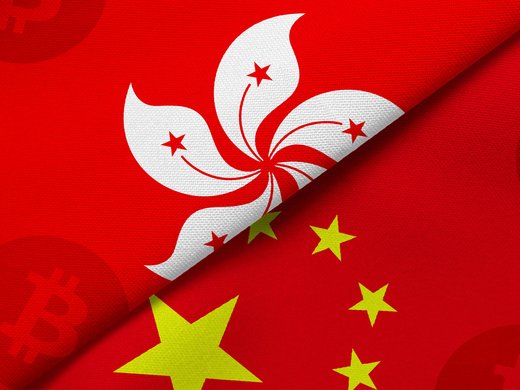Reputations were restored on Toronto’s Bay Street last week.
Forecasters at institutions such as Royal Bank of Canada and Canadian Imperial Bank of Commerce — who were embarrassed by the Bank of Canada’s shock interest rate cut in January — correctly predicted that deteriorating economic data would prompt Stephen Poloz to reduce Canada’s benchmark rate for a second time in 2015. The target rate for overnight loans between banks now is 0.5 per cent — a quarter point above what the central bank says is its effective lower bound.
The decision appeared as if it could have gone either way.
Surveys of analysts and market pricing suggested expectations were split. When asked whether it was a close call, Poloz said that it wasn’t — but the process of achieving consensus certainly appeared to be more agonizing than usual. “We had a number of trade-offs on the table,” he said at a press conference after the announcement. “Let’s say it’s sufficiently complex it requires a lot of deliberation and a lot of inputs. It’s not a mechanical decision. Not even close.”
On the eve of the announcement, I wrote that the case to leave the benchmark rate unchanged was at least as good as any argument to cut. (If I worked on Bay Street, my clients would have lost money.) I thought the Bank of Canada would decide to save its dwindling stock of gunpowder for another day. But I correctly assumed that the decision would come down to a judgement call, and that we would therefore learn something about Canada’s still relatively unknown central bank governor.
So what did we learn? A few things.
We know now with certainty that Poloz will confront the threats in front of him, and worry about the shadows on the horizon later.
The reasons to wait were either hypothetical or theoretical; market turmoil triggered by Greece or a continued collapse in Chinese stock prices, say, or the possibility that lower-for-longer monetary policy is causing potentially destabilizing asset-price bubbles. Poloz attempted to explain away the risk of exacerbating record levels of household debt by saying the fastest way to ease the debt burden was to speed economic growth. And the economy needs a boost: the central bank said in its Monetary Policy Report that gross domestic product likely contracted in the first half of 2015, delaying the economy’s return to a level of output that policy makers deem equivalent to its non-inflationary potential.
“We believe that the primary mission takes precedence in this situation,” he said. “Yes, there is some risk that financial vulnerabilities will edge higher as a consequence but that they're manageable within the context, especially if we do get the economy back home a little sooner than it otherwise would. That's good for financial stability.”
Reasonable and intelligent people will debate Poloz on that, of course.
But those people aren’t setting Canadian monetary policy. Poloz, like the leaders of the Federal Reserve, appears to have decided it has no choice but to make up for a lack of fiscal stimulus — the Bank of Canada predicts government contribution to GDP growth in 2015 will be a mere 0.1 percentage points — with lower interest rates and a weaker currency. Poloz even made a point of stating that the divergence between the Canadian and US economies likely meant that the Bank of Canada would be under no pressure to follow the Federal Reserve when it begins lifting American borrowing costs. Interest rates in Canada will remain lower for much longer.
Poloz has set this course knowing that monetary policy likely isn’t as potent as it once was.
He said it is a “puzzle” why non-energy exports have yet to recover. All the ingredients for a surge have been in place for months: weaker currency, stronger US demand, depressed energy prices. That used to be all it took to spur exporters into action. The Bank of Canada noted that its survey of businesses suggests companies are finding it more difficult to keep up with orders, suggesting a jump in investment and production is at hand. But a piece of the puzzle surely is the changed nature of global trade, which Poloz himself identified as a potential challenge to the effectiveness of monetary policy in a speech earlier this year. The trend in factory production is to locate facilities closer to customers. So even if a Canadian producer of goods is confident enough to expand in a sluggish global economy, the company is just as likely to expand in the United States, Mexico or Asia as it is at home. A certain percentage of Canada’s pre-crisis exports have been lost to structural shifts in supply chains. There is nothing monetary policy can do about that. Yet Poloz still is prepared to try.
What he is unprepared to do is offer an opinion on whether governments are doing their part to help the economy. The International Monetary Fund says that countries with fiscal space should use it to boost growth. Canada is one of those countries.
But Prime Minister Stephen Harper has made a balanced budget the focus of his re-election campaign. That stance has put additional pressure on the Bank of Canada to cut interest rates. Former Federal Reserve chairman Ben Bernanke used to tell politicians that their tight fiscal policy was hurting the US recovery. Poloz last week would say only that he takes fiscal policy as a given.
That position is entirely fair. Part of the job of running a central bank is maintaining good relations with the fiscal authority. But it does remove Canada’s most trusted economic institution from an important debate that has implications for the future health of the economy. The public would benefit from the Bank of Canada’s assessment of the IMF’s position on fiscal stimulus.
Voters are unlikely to get it. Poloz’s willingness to test boundaries is limited to the implementation of monetary policy.


